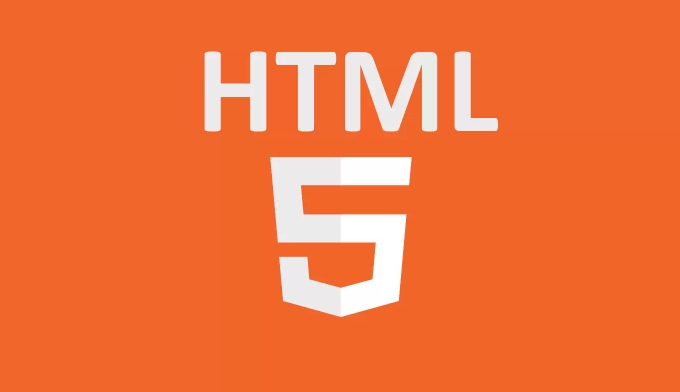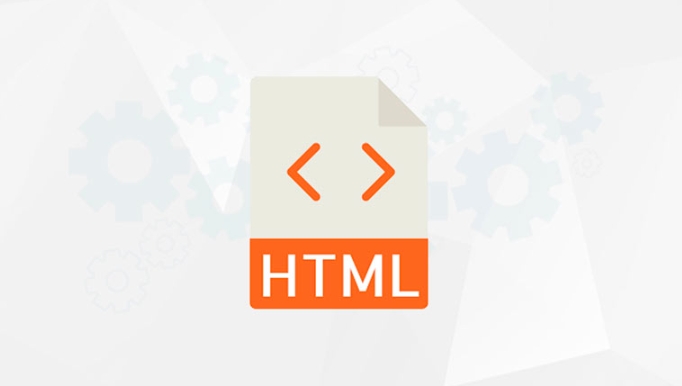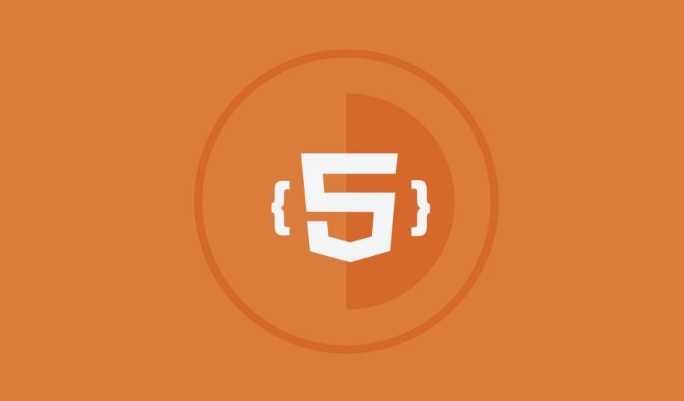 Web Front-end
Web Front-end
 HTML Tutorial
HTML Tutorial
 What is Web Storage API in HTML5 (localStorage and sessionStorage)?
What is Web Storage API in HTML5 (localStorage and sessionStorage)?
What is Web Storage API in HTML5 (localStorage and sessionStorage)?
Jul 07, 2025 am 02:22 AMThe Web Storage API provides two ways for clients to store data: localStorage and sessionStorage. localStorage is used to store data permanently, and will not be lost even if the browser is closed. It is suitable for saving user preferences, topic settings and other information; sessionStorage is only valid during the current session and is cleared after closing the page or tag. It is suitable for temporary data such as form storage. Both support the setItem(), getItem(), removeItem() and clear() methods to manipulate data, but the stored data must be in string format, and the object or array must be converted through JSON.stringify(). When using it, you need to pay attention to security, capacity limitations (usually 5MB), synchronization operations may affect performance and inability to access across domains.

The Web Storage API is a client data storage mechanism introduced by HTML5 to save key-value pair data in the browser. Compared with traditional cookies, it provides a simpler and larger storage method. There are mainly two types: localStorage and sessionStorage .

The difference is that the data life cycle and scope of action are different:

-
localStorage: The data is permanently saved and will not be lost even if the browser is closed unless it is actively cleared (such as callingremoveItem()orclear()). -
sessionStorage: The data is only valid during the current session and will be cleared after closing the page or browser tag.
How to store data using localStorage?
localStorage is suitable for saving user preferences, theme settings, login status, etc. that do not require frequent changes.
Common methods include:

-
setItem(key, value): save data -
getItem(key): get data -
removeItem(key): delete a certain data -
clear(): Clear all data
For example:
// Store data localStorage.setItem('username', 'john_doe'); // Get data const user = localStorage.getItem('username'); console.log(user); // Output: john_doe // Delete the data localStorage.removeItem('username');
It should be noted that the data in localStorage is in string format. If you want to store objects or arrays, you need to first convert them with JSON.stringify() .
Typical application scenarios of sessionStorage
sessionStorage is more suitable for temporary data storage, such as temporary storage in the middle of the form filling, cross-page parameter transmission, etc.
For example, in a multi-step registration process, user input can be temporarily saved to sessionStorage at each step so that the user does not lose the filled content when jumping to the page.
// Save the data in the first step sessionStorage.setItem('email', 'user@example.com'); // Read const email = sessionStorage.getItem('email');
Similar to localStorage , it supports the same method names and operations, but only works in the current session.
What should you pay attention to when using Web Storage?
Although Web Storage is convenient, there are some limitations and considerations:
- Security issues : Do not store sensitive information, such as passwords, tokens, etc., because these data can be accessed by homologous scripts.
- Capacity limit : Most browsers support approximately 5MB of storage space, and the specific values ??may vary from browser to browser.
- Synchronization operation : Web Storage is synchronized, and frequent reading and writing may affect performance.
- Cannot access across domains : Only storage content under the same origin (the protocol domain name port is consistent).
If you need more complex structured data management, or want to implement asynchronous storage, you can consider using IndexedDB.
Basically that's it. The Web Storage API is simple and easy to use, but in actual development, you still need to choose the appropriate storage method according to the scenario.
The above is the detailed content of What is Web Storage API in HTML5 (localStorage and sessionStorage)?. For more information, please follow other related articles on the PHP Chinese website!

Hot AI Tools

Undress AI Tool
Undress images for free

Undresser.AI Undress
AI-powered app for creating realistic nude photos

AI Clothes Remover
Online AI tool for removing clothes from photos.

Clothoff.io
AI clothes remover

Video Face Swap
Swap faces in any video effortlessly with our completely free AI face swap tool!

Hot Article

Hot Tools

Notepad++7.3.1
Easy-to-use and free code editor

SublimeText3 Chinese version
Chinese version, very easy to use

Zend Studio 13.0.1
Powerful PHP integrated development environment

Dreamweaver CS6
Visual web development tools

SublimeText3 Mac version
God-level code editing software (SublimeText3)

Hot Topics
 Explain the purpose of the role attribute in ARIA.
Jun 14, 2025 am 12:35 AM
Explain the purpose of the role attribute in ARIA.
Jun 14, 2025 am 12:35 AM
ARIA's role attribute is used to define the role of web elements and improve accessibility. 1. Role attribute helps assistive technology to understand the functions of elements, such as buttons, navigation, etc. 2. Use role attributes to assign specific roles to non-semantic HTML elements. 3. The role attribute should be consistent with the element behavior and be verified by the accessibility tool test.
 HTML and Design: Creating the Visual Layout of Websites
Jun 14, 2025 am 12:39 AM
HTML and Design: Creating the Visual Layout of Websites
Jun 14, 2025 am 12:39 AM
How to create a website layout? 1. Use HTML tags to define the content structure, such as, ,. 2. Control styles and positions through CSS, using box model, float or Flexbox layout. 3. Optimize performance, reduce HTTP requests, use cache and optimize images, and ensure responsive design.
 How can you ensure your HTML code is readable and maintainable?
Jun 10, 2025 am 12:06 AM
How can you ensure your HTML code is readable and maintainable?
Jun 10, 2025 am 12:06 AM
Improve the readability and maintainability of HTML code can be achieved through the following steps: 1. Use semantic tags, such as, etc. to make the code structure clear and improve SEO effect; 2. Keep the code formatted and use consistent indentation and spaces; 3. Add appropriate comments to explain the code intention; 4. Avoid excessive nesting and simplify the structure; 5. Use external style sheets and scripts to keep the HTML concise.
 How do I stay up-to-date with the latest HTML standards and best practices?
Jun 20, 2025 am 08:33 AM
How do I stay up-to-date with the latest HTML standards and best practices?
Jun 20, 2025 am 08:33 AM
The key to keep up with HTML standards and best practices is to do it intentionally rather than follow it blindly. First, follow the summary or update logs of official sources such as WHATWG and W3C, understand new tags (such as) and attributes, and use them as references to solve difficult problems; second, subscribe to trusted web development newsletters and blogs, spend 10-15 minutes a week to browse updates, focus on actual use cases rather than just collecting articles; second, use developer tools and linters such as HTMLHint to optimize the code structure through instant feedback; finally, interact with the developer community, share experiences and learn other people's practical skills, so as to continuously improve HTML skills.
 How do I use the element to represent the main content of a document?
Jun 19, 2025 pm 11:09 PM
How do I use the element to represent the main content of a document?
Jun 19, 2025 pm 11:09 PM
The reason for using tags is to improve the semantic structure and accessibility of web pages, make it easier for screen readers and search engines to understand page content, and allow users to quickly jump to core content. Here are the key points: 1. Each page should contain only one element; 2. It should not include content that is repeated across pages (such as sidebars or footers); 3. It can be used in conjunction with ARIA properties to enhance accessibility. Usually located after and before, it is used to wrap unique page content, such as articles, forms or product details, and should be avoided in, or in; to improve accessibility, aria-labeledby or aria-label can be used to clearly identify parts.
 How do I create a basic HTML document?
Jun 19, 2025 pm 11:01 PM
How do I create a basic HTML document?
Jun 19, 2025 pm 11:01 PM
To create a basic HTML document, you first need to understand its basic structure and write code in a standard format. 1. Use the declaration document type at the beginning; 2. Use the tag to wrap the entire content; 3. Include and two main parts in it, which are used to store metadata such as titles, style sheet links, etc., and include user-visible content such as titles, paragraphs, pictures and links; 4. Save the file in .html format and open the viewing effect in the browser; 5. Then you can gradually add more elements to enrich the page content. Follow these steps to quickly build a basic web page.
 What is an HTML tag?
Jun 13, 2025 am 12:36 AM
What is an HTML tag?
Jun 13, 2025 am 12:36 AM
HTMLtagsareessentialforstructuringwebpages.Theydefinecontentandlayoutusinganglebrackets,ofteninpairslikeand,withsomebeingself-closinglike.HTMLtagsarecrucialforcreatingstructured,accessible,andSEO-friendlywebpages.
 How do I create checkboxes in HTML using the element?
Jun 19, 2025 pm 11:41 PM
How do I create checkboxes in HTML using the element?
Jun 19, 2025 pm 11:41 PM
To create an HTML checkbox, use the type attribute to set the element of the checkbox. 1. The basic structure includes id, name and label tags to ensure that clicking text can switch options; 2. Multiple related check boxes should use the same name but different values, and wrap them with fieldset to improve accessibility; 3. Hide native controls when customizing styles and use CSS to design alternative elements while maintaining the complete functions; 4. Ensure availability, pair labels, support keyboard navigation, and avoid relying on only visual prompts. The above steps can help developers correctly implement checkbox components that have both functional and aesthetics.





